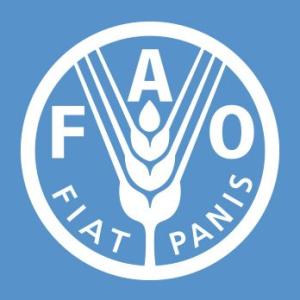FAO provides an innovative approach for detailed crop mapping of Urmia Lake basin
11 June 2020
- As part of ongoing knowledge-loaded efforts led by the Food and Agriculture Organization of the United Nations (FAO) to help the Iranian policymakers in taking sound measures to restore Urmia Lake, the Organization has partnered with Water Engineering Research Institute of Tarbiat Modares University (WERI) to develop a pioneer report focused on providing a crop mapping for the Urmia Lake basin.
As part of ongoing knowledge-loaded efforts led by the Food and Agriculture Organization of the United Nations (FAO) to help the Iranian policymakers in taking sound measures to restore Urmia Lake, the Organization has partnered with Water Engineering Research Institute of Tarbiat Modares University (WERI) to develop a pioneer report focused on providing a crop mapping for the Urmia Lake basin.
Conducted in the framework of the “Integrated Programme for Sustainable Water Resources Management in the Urmia Lake Basin,” a project jointly run by FAO and Urmia Lake Restoration Program (ULRP) and funded by the Embassy of Japan, the report uses “innovative earth observation missions, including time-series imageries of the Synthetic Aperture Radar and optical satellites to provide a high-resolution crop map of the basin for the year 2019,” says Mr Ali Mousivand, a Senior Scientist at WERI.
As the project aims to halt and invert Urmia Lake’s desiccation by targeting a 40 percent reduction of water consumption in the basin, “this new crop mapping approach, in combination with evapotranspiration maps would enable the authorities to find the crop types grown in the hot-spot zones consuming more water,” he added.
According to this Iranian Scientist, “given the availability of the exact crop map of the basin, policymakers would be able to determine the area allocated to each crop.”
This new crop map also “allows ULRP to more accurately assess the water resources and water consumptions in agricultural practices,” as per Mr Behdad Chehrenegar, the Head of Research Division of ULRP.
Mr Chehrenegar further said that “accurate data leads to more accurate assumptions and feedbacks to policymakers in order to reach to more balance water allocation between Urmia Lake ecosystem and large water consumers like agriculture sector.”
Describing some policy implications of this detailed crop mapping, Mr Mousivand who led this study at WERI said that despite the ULRP’s attempt to reduce water-demanding crops growing in the region, the new and more accurate crop map reveals that “still, there have been considerable lands devoted to water-demanding crops around the lake.” On the other hand, for less water-demanding crops such as rapeseed that is advocated by the authorities to be cultivated in the area, “the results show that this crop has not been given sufficient priority and has only been grown in small patches across the basin.”
Crop mapping is a critical step in agricultural monitoring, land resources management systems and land use policies. It is also of prominent importance for water accounting to estimate surface roughness of each crop type.
FAO, being the lead UN agency dedicated to food and agricultural development, offers its technical expertise, data and tools to support its member countries in their efforts to plan and implement crop patterns for cultivating climate-resilient crops types, with enhanced tolerance to heat, drought and salinity stresses.






